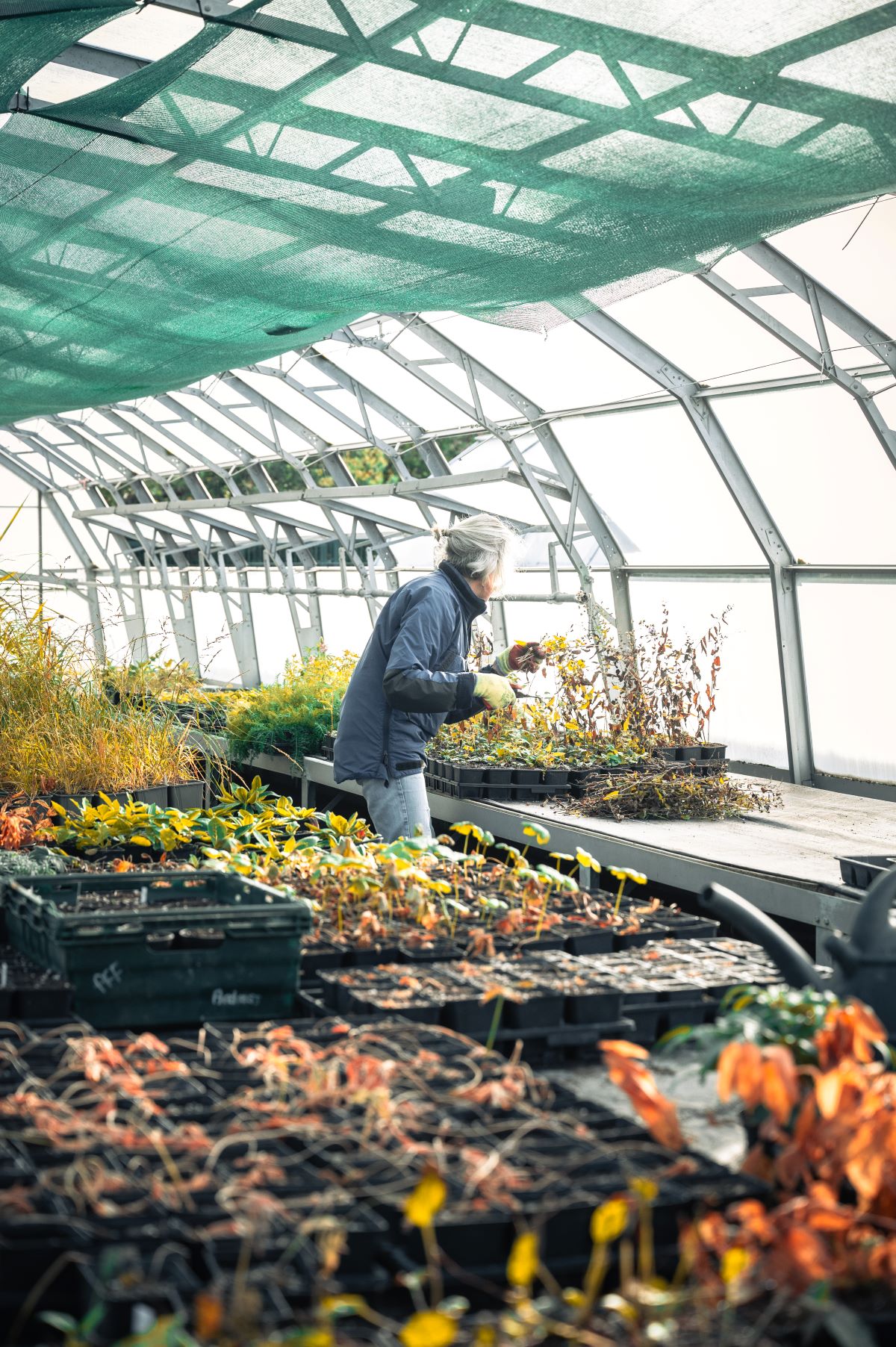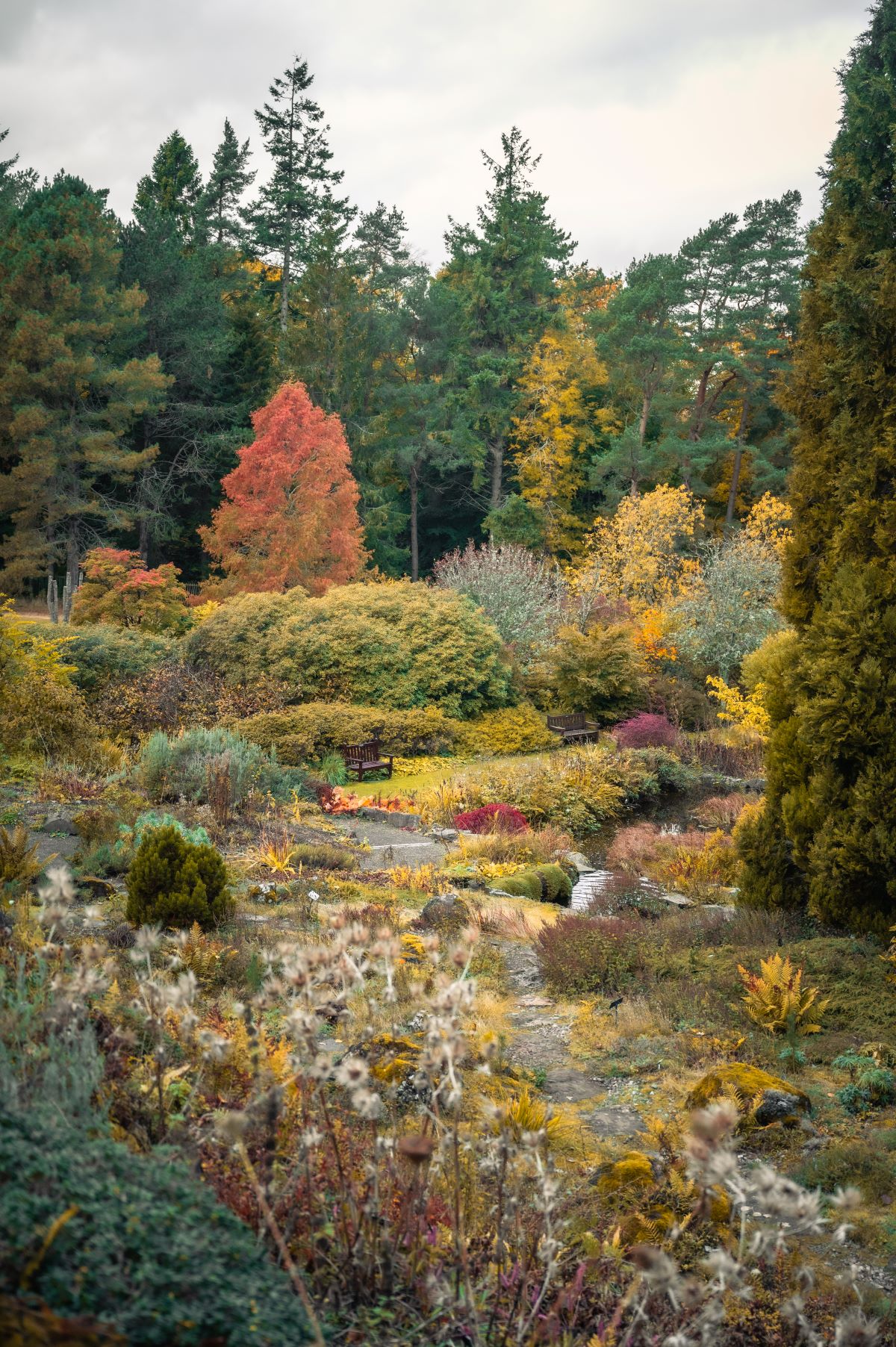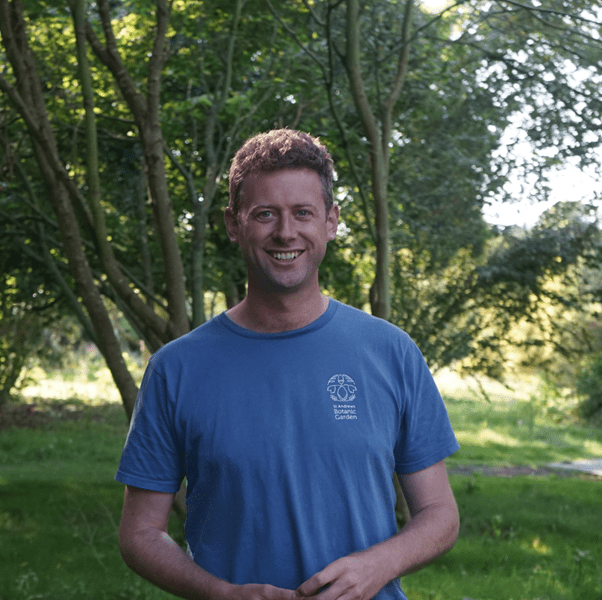Harry Watkins, director of St Andrew Botanic Gardens, on growing up with gardeners as a child, experimenting with new ideas and how what we thought we knew about nature is being challenged.
I’ve always enjoyed being outdoors, my mum is a great gardener, and her passion has been a massive influence on how I see landscapes.
Her parents were farmers who were very interested in the organic movement, and their approach to land stewardship ran through a lot of our childhood.
Even when my grandfather was doing his carrots in the garden, he called it drilling, and gardening always seemed to have a sense of mission. I loved climbing trees and playing in the woods – I still do.
I trained as a landscape architect and over time came to specialise in sensitive and heritage landscapes – many of my clients were botanic gardens, arboreta, and nature reserves.
I try to get in to work at 7am, check the key parts of the garden, catch up on correspondence, and then have an open door for anything that needs to be discussed.

From 9am, the day can go in lots of different directions. We’re at a critical stage of change and growth at the moment, so there’s a lot of meetings but I try to keep a balance between being available for colleagues and the research and development work we’re doing.
At 3.30 I pick up my daughters from nursery, take them to the park and make them tea.
A new experiment
This autumn we’re working on a new project that replaces overgrown shrubs with an experiment (one of the things I love the most about the botanic garden is the opportunity to explore ideas).
The area we’re working on is quite large – about 900m2 – and we’re getting the site ready to sow seeds in March.
The project asks a fairly simple question – how do you know when a plant community has reached maximum diversity?
But the answer is very difficult, especially when you’re working with novel ecosystems, so we’re going to be using some cutting edge game theory and statistical models to try to answer this question and see how the answers change through time.
Normally a scientist would do this type of experiment in a research plot but doing it in the middle of the botanic garden means that it needs to be beautiful and interesting at the same time.
‘There is an amazing range of habitats in Fife’

Our big objective at St Andrews Botanic Garden is to understand how temperate plants are responding to climate change.
We want to focus on plants that grow in conditions similar to those you find in Scotland and study the connection between landscape and evolution.
In a garden that’s planted like a museum, this connection between a plant and a place is really difficult to imagine, let alone study.
When you look at Fife, there’s an amazing range of habitats that we take for granted, so we wanted to turn this around.
Sand dunes, for example, are incredibly dynamic, rich in biodiversity, fragile, and only 500m from the Garden – they’re amazing places to study ecology and evolution, and our projects like this allow us to do studies that you wouldn’t want to do in a nature reserve.
‘The number of plants at risk of extinction has never been higher’
Every botanic garden has a different role. Some are great at conservation, others focus on tourism and events, and there’s everything in between.
Generally, I think the sector is at a real point of change. Up until the 1980s botanic gardens tended to be places which accumulated and displayed a wide range of plants for students.
It’s taken time, but in the past few years we’ve seen a real shift as people see a different role for the future – one that’s much more outward facing, involved in landscape-scale conservation, working harder at education for all ages, and offering a new perspective on our environment.

The answers to society’s biggest challenges all involve a different relationship with plants, whether it’s food futures, water security, energy policy, housing, climate change or the biodiversity crisis, so we’re seeing botanic gardens around the world all developing new niches and trying to contribute to these challenges.
It’s essential to preserve species for generations to come, the number of plants at risk of extinction has never been higher.
That said, we’re also witnessing an unparalleled period of speciation and movement of plants across regions, so the net effect of this change is one of the biggest and most difficult questions botanists and ecologists are working on at the moment.
Every species of plant grows in a range of environments – at some edges, climate change or habitat fragmentation is making it difficult for the plant populations to sustain themselves, but there are often edges of their range where they have the potential to expand.
All plant populations are moving, in different directions and at different speeds, and these new communities challenge so much of what we thought we knew about nature.
Read more from the Life With series here.
Subscribe to read the latest issue of Scottish Field.
TAGS


